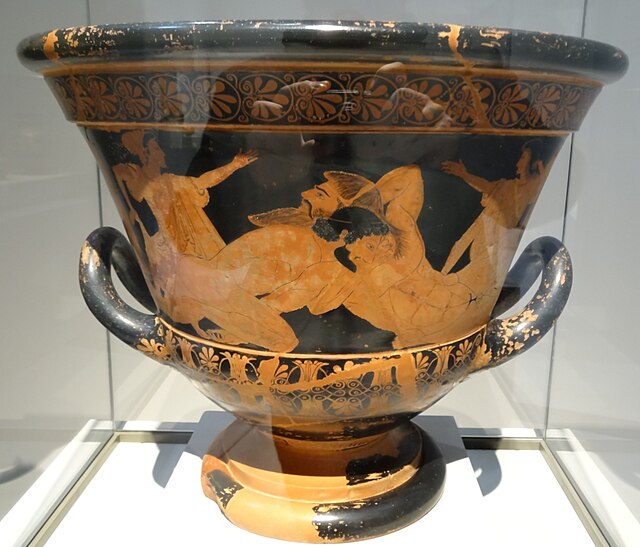A krater or crater was a large two-handled type of vase in Ancient Greek pottery and metalwork, mostly used for the mixing of wine with water.
Young rider crowned by a winged Nike (Victory), by Sisyphus Painter, c. 420 BC, in the Louvre
Manner of Lydos, black-figure column crater depicting swans, c. 550 BC, Museum of the Ancient Agora, Athens
Euphronios & Euxitheos, Cratère attique à figures rouges, 515–510 BC, Louvre
Column
A vase is an open container. It can be made from a number of materials, such as ceramics, glass, non-rusting metals, such as aluminium, brass, bronze, or stainless steel. Even wood has been used to make vases, either by using tree species that naturally resist rot, such as teak, or by applying a protective coating to conventional wood or plastic. Vases are often decorated, and they are often used to hold cut flowers. Vases come in different sizes to support whatever flower is being held or kept in place.
Neoclassical vase; circa 1790; jasper; height: 25.4 cm, width: 18.7 cm; Victoria and Albert Museum (London)
The David Vases; 1351 (the Yuan Dynasty); porcelain, cobalt blue decor under glaze; height: 63.8 cm; British Museum (London)
Detail of a red-figure lekanis; 365–350 BC; terracotta; Metropolitan Museum of Art (New York City)
Red-figure mixing vessel; 330-320 BC; terracotta; from Apulia (south Italy); Getty Villa (Los Angeles, USA)








